Ecommerce email marketing is the best way to engage your audience and nurture relationships with your customers and subscribers. There are so many channels to deliver your marketing messages, but email is the one that people have chosen to receive: Your email list is your most loyal and engaged audience.
For that reason, email is an essential channel — especially ecommerce email marketing.
As an ecommerce store owner, you cannot deliver the service people expect, let alone develop the loyal and profitable customer relationships you want, without email marketing.
That means you need to become an ecommerce email marketing expert. You need to understand basic strategies, keep an eye on results, and prioritize your resources to developing new campaigns and refining existing endeavors.
Most of all, you simply need to believe in its importance and dedicate yourself to either finally starting a consistent email marketing program or improving your existing one. Let’s dive in and learn how to get started with ecommerce email marketing!
Need to know how to set up emails in WooCommerce? Check out our email settings documentation, which explains how to customize transactional emails in WooCommerce. For marketing emails, skip to the end of this post for our top recommendations.
What is ecommerce email marketing?
↑ Back to topEmail marketing for ecommerce is a digital marketing tool that engages your subscribers and potential customers to strengthen their connection with your brand and turn them into repeat and loyal customers.
Why is email marketing different from other channels? And how is it different from just sending emails from a Yahoo or Gmail account? Let’s take a deeper look.
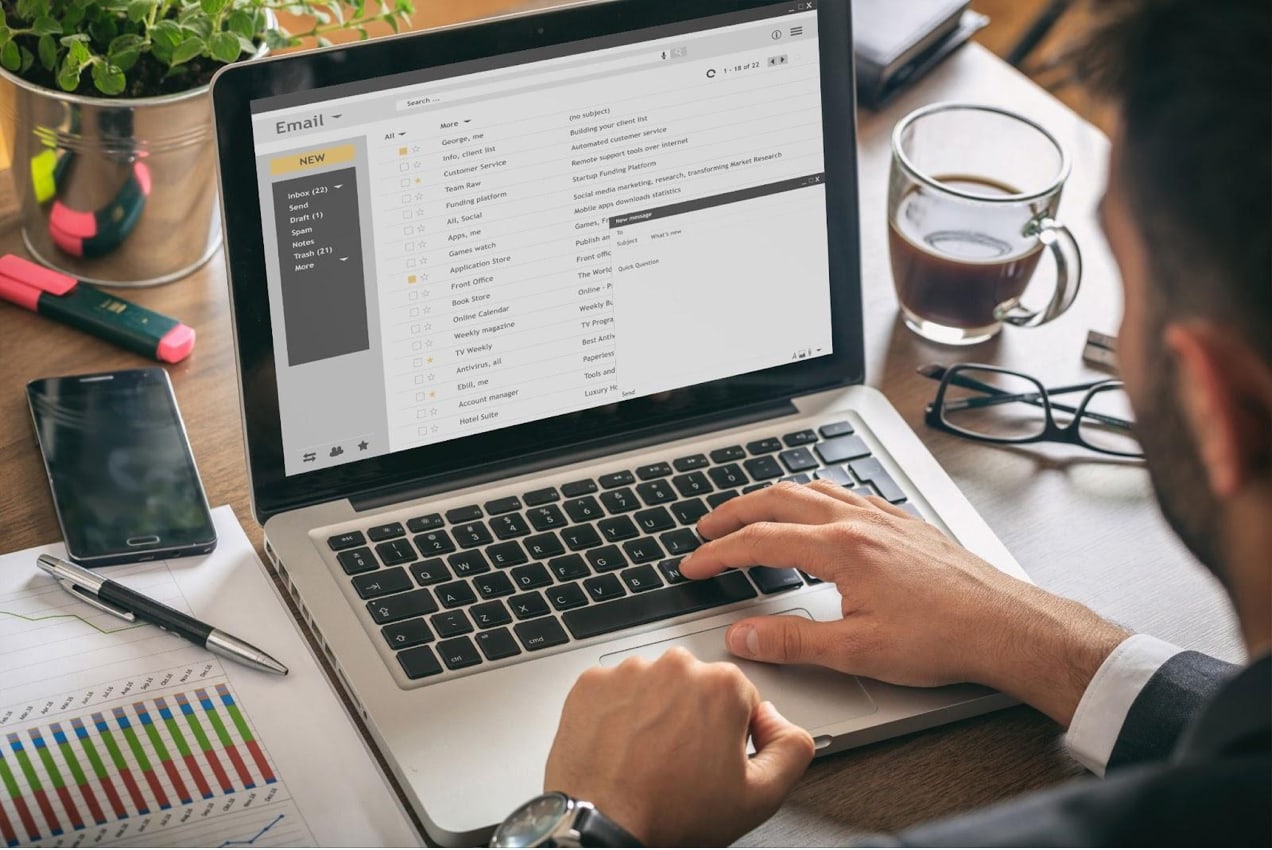
The lifeblood of email
Email marketing involves promotional emails, welcome emails, product-focused emails, sales emails, coupon deals and discount emails, time-sensitive emails, emails that deliver value to the subscriber, customer service emails, transactional emails, and so much more.
Whew.
The best ecommerce email marketing strategy also includes some personality and design.
In the online world, you can’t afford to look like a nameless, faceless, cubicle-populated corporation. Everyone has other choices online, and email is a terrific place to inject your marketing with personality, humor, and a unique brand voice.
Ecommerce email marketing requires consistency.
You can automate some of it and save yourself time. You can segment it out to parts of your audience, or send email blasts to your entire list. You can create multi-email campaigns, or one-off emails. You can tell stories, reference current events, and connect to videos, social media, and other forms of online media.
The technicalities of email
Though it can get quite complicated, effective email marketing for ecommerce generally requires low levels of technical knowledge for small to mid-sized organizations. But it does require some technical expertise — and you cannot neglect this, because keeping in compliance with anti-spam laws and regulations means using appropriate email marketing tools and procedures.
How do people join your email list? What happens after they subscribe? How can they unsubscribe if they want to leave? You need to know the answers to these questions to have a sustainable email marketing program.
And you cannot do any of this by just sending emails from a normal email account like Yahoo or Gmail. You’ll need an email service provider and someone (even if it’s you) to dedicate time to build campaigns.
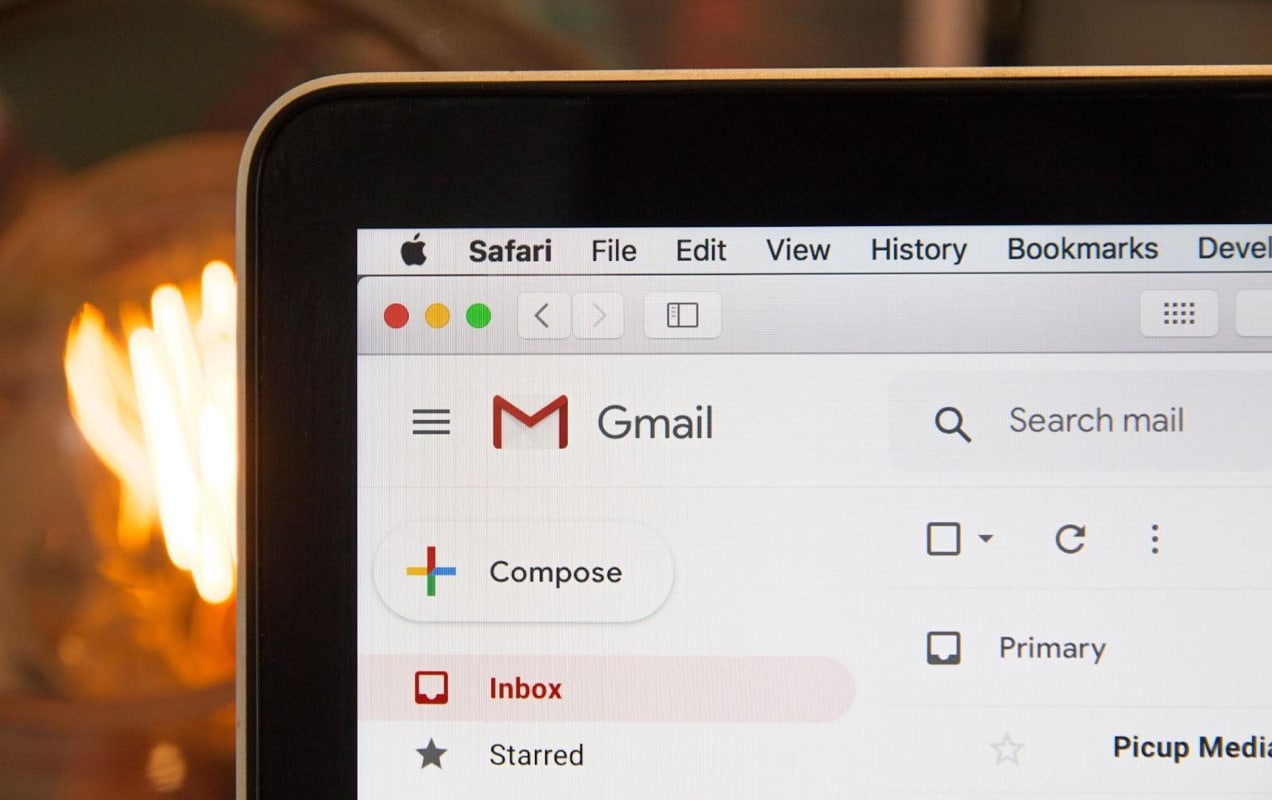
The uniqueness of email
No other channel, except perhaps SMS, engages existing customers and subscribers in this manner. You can’t use TV, radio, or traditional media like that to speak 1:1 with your people in a place designed specifically to receive messages. Everything else is an interruption. You can use direct mail, but it costs far more to use, so it’s not appropriate for frequent communication.
And while social media allows for some direct communication, the audiences there are fickle.
And again, you’re probably interrupting their stream.
They don’t expect to read long messages there, or encounter sales presentations.
With email, it’s an accepted part of having an email account, because if you’re doing email marketing right, your subscribers opted in to receive your emails. They want to hear from you. Or, at the very least, they don’t mind hearing from you.
So, let’s take a look at how to develop an ecommerce email marketing strategy.
We’re going to cover just about everything. So bookmark this page. Favorite it. Share it. Put it in your essential marketing resources folder. However you organize yourself — don’t lose this page if you have an ecommerce brand.
Why email marketing is effective
↑ Back to topThe fact is, when you use email marketing well, it makes money. Various studies have been done on this to try to determine the return on investment for email.
One study in 2021 examined email marketing ROI in a variety of industries, and found a range of 32-45:1 for ROI. The ‘retail, economics and consumer goods’ category — which would include ecommerce — topped the range at 45:1.
But why? Why does email produce the highest ROI of any marketing channel?
It does so for two reasons — low cost, and direct engagement with willing, loyal, repeat customers.
People opt in to receive your emails. That means that unlike interruptive commercials on YouTube, popup ads, and display ads trying to lure them away from what they came online to do, your subscribers chose to receive your emails. So even if they don’t open every one of them — which they won’t — they see your email subject lines, read them, and move on to their next task.
Even if all they see are your subject lines and pre-headers, you’ve communicated with them.
And you can send emails every day without having to pay extra for it. Most email marketing service providers like Klaviyo, MailPoet or AutomateWoo, and the numerous others out there charge flat monthly fees based on your store or the number of subscribers you have.
But you can email those subscribers to your heart’s content and it doesn’t cost extra in most cases.
Thus, email is very low cost compared to the potential revenue it can generate.
Types of email marketing campaigns
↑ Back to topAs you’re about to see, not all ecommerce campaigns consist of promotional emails trying to make sales or generate immediate revenue. You can use email to communicate much more than that to your subscribers. And you should if you want fewer unsubscribes and higher engagement.
Here’s a list of some of the most effective ecommerce email marketing campaigns, broken into four categories: automation, nurturing, sales, and transactional emails.
Automation email campaigns
Simple email automation happens in response to an action taken by a subscriber or customer. You want customers to know that whatever they did actually worked. Have you ever bought something online, and then gotten no message, no confirmation, no word that your purchase actually went through? It’s unnerving.
Here are a few common types of automated ecommerce email campaigns:
Welcome emails
Whether a single welcome email or a series, when someone joins your email list, you need more than a dull, lifeless confirmation message like “Email subscription confirmed.”

Email example from Really Good Emails
New subscribers are potential customers. Make them excited to be here. Make them glad, or relieved, that they joined your email list. Introduce them to your brand, your personality, and a few ways they can engage with you.
Most of all, make them remember that they signed up for your email list. People are busy. They do a lot of things online, and they don’t remember everything they did, even a couple days later when they’re doing more stuff online.
It’s not unheard of for people to join email lists, and then a couple weeks later unsubscribe and give, “I never signed up to receive emails from you” as the reason. Hmm.
Situations like this indicate a failure on the company’s part to properly welcome the new subscriber to their email list.
Welcome emails are thus essential. A welcome series is even better. And if, after receiving your welcome series, a person still unsubscribes, that’s okay. That just means they were never going to be a customer who engages with you through email.
Thank you emails
After someone buys a product or takes another important action like filling out a survey, send them an automated thank you email. This doesn’t have to be long, and can be just text plus your logo if you don’t want to dedicate time to a more intricate design.
The saying is true — it’s the thought that counts. In a world where people don’t get thanked or appreciated nearly enough, post-purchase emails that just say “thank you” cut through the negativity and make people feel good about what they’ve done.
Abandoned cart emails
It’s very common for people to place things in an online shopping cart and then never complete the purchase. In fact, this is more common than not. 66.5% of online shoppers put items in their shopping carts but don’t buy them, according to one study. This represents tons of lost revenue.
If you could recover just 10% of the revenue from those abandoned purchases simply by sending out an automated abandoned cart email, that might be the single most valuable email marketing you could create.
And again, as with all automated emails, once you set an abandoned cart email up, they just keep working in the background. You don’t have to do a thing, and your abandoned cart emails make you money.
Renewal emails
If you have a membership or some other kind of recurring payment program, members need to renew. Plus, credit cards expire. When it comes time to renew, you don’t want people to be caught off guard if there is an annual expense.
Use email marketing automation to send emails that encourage customers to renew, ideally a month in advance, and you’ll have higher renewal rates and much less friction with surprise billings. If renewal happens automatically, then this email becomes essentially a notification that the renewal is about to take place.
If the customer has to manually renew, you’ll want to send out multiple reminders, and you can automate all of these. And — don’t forget the automated thank you email after they renew.
Review request emails
If you want more product reviews, ask for them. But this becomes just another task to add to your list if you leave it up to you. So, don’t leave it up to you. Automate it!
Consider your products, and what the ideal amount of time might be between when the product gets delivered and when they are most likely to write a good review. It might be the same day. It might be a week or two later. But you can automate an email to go out every time someone makes a purchase from your ecommerce site, and that email can ask the customer to leave an online review.
The best review request emails include a link straight to your preferred platform for collecting reviews.
Birthday emails
If your ecommerce business is relevant on customer birthdays, you can send out automated birthday emails with special offers and deals. This is a simple type of marketing automation that subscribers love.
And even if you can’t find a business tie-in, a simple well-wish through a birthday email is a great way to stay top-of-mind with subscribers without being promotional.
Wishlist emails
Ecommerce businesses often allow existing and future customers to create wish lists — items you sell that they want, but that for whatever reason, they don’t want to buy right now.
You can automate wishlist marketing emails to remind people now and then of what they put on their wishlists. If any of those items go on sale, this type of email can be used to give them an extra reason to buy it now.
Winback emails
What about inactive subscribers? Should you ignore them because they seem to be ignoring you?
A better approach is to set up an email automation campaign that sends out an “Are you still there?” style of email that asks if the person wants to remain subscribed to your email list. Re-engagement campaigns like this might offer a special one-time discount code to motivate them to stick around and check out your online store again.
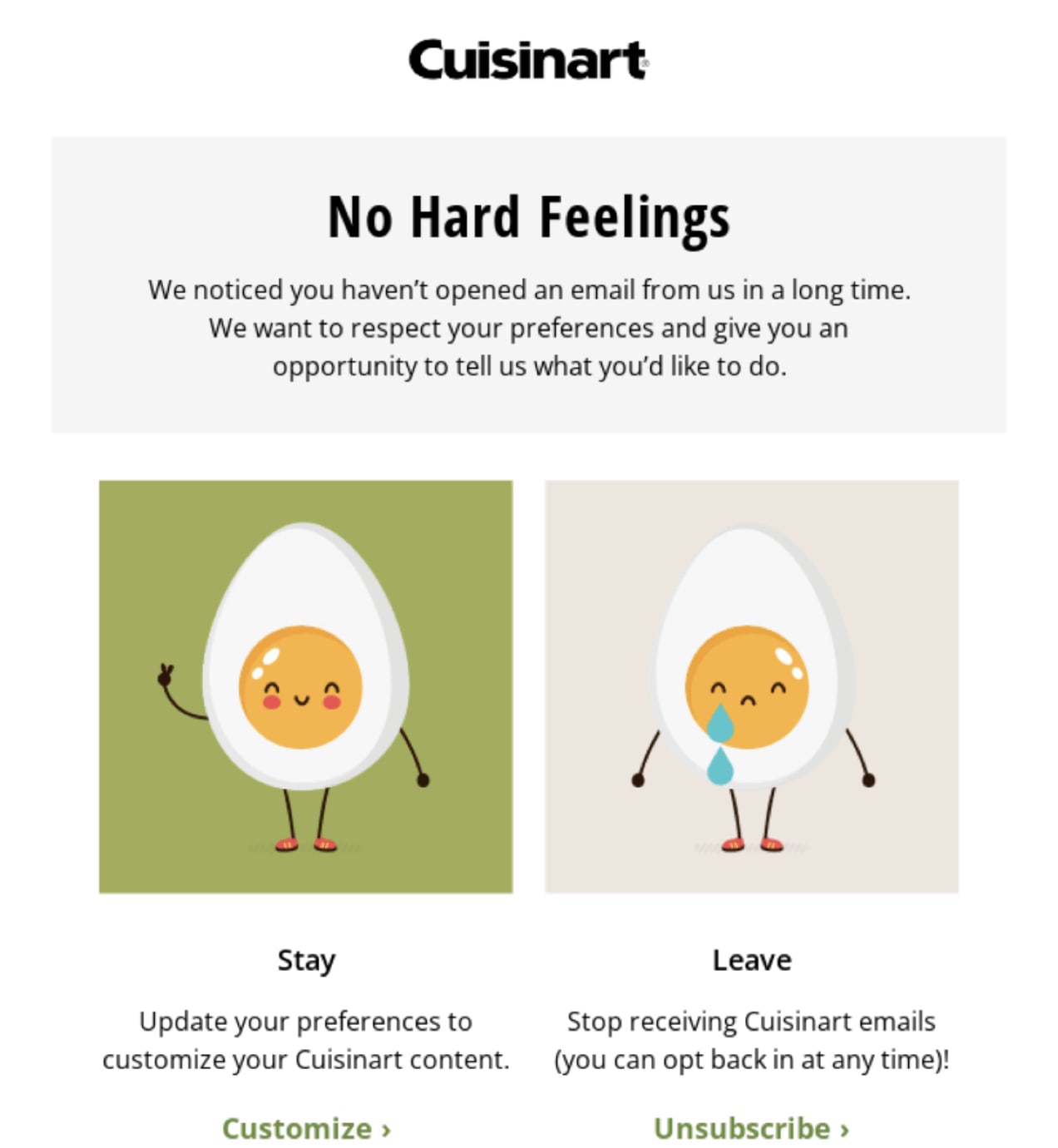
Winback email example from Really Good Emails
Action-based emails
Depending on the email software you’re using, you can also set up other trigger-based email automation campaigns. For example, if people click on certain links in your emails, you can set up automated email campaigns that will get sent out to those people to follow up on whatever marketing campaign the link or its separate landing page was about.
Or if subscribers buy certain items, or download coupons, free guides, or other marketing assets, you can create automated campaigns that nurture those customers along whatever path they have started.
This type of automation takes a bit more work than the others on this list, and not all email marketing software companies operate on this level.
Nurturing email campaigns
Another type of ecommerce email marketing strategy includes emails whose primary purpose is to deepen customer engagement with the company.
You want to make them like you. Why? Because people buy more from businesses they know, like, and trust. You win trust and make your subscribers like you by sending emails that don’t require them to spend money. You’re giving them value, instead of asking for something.
Social proof emails
When you get some good customer stories, start sharing them over email. The better the story, the longer the email can be. Include photos. Include videos. Include screenshots of reviews left online, to verify the authenticity. Names are good. First and last names are better. Social proof builds the feeling of community among your customers and makes them want to stay.
Social proof can also include awards your company has won, or ways you may have been honored by a city or other business.
It could include partnerships with other businesses or charities that bolster your reputation.
If you write a book, talk about this for social proof. Books are big trust verifiers.
Educational emails
Here, you create branded emails with ecommerce content marketing that benefits the reader in some way.
What are some common problems your customers face that relate to your industry? Even if you don’t have a specific product that solves that problem, helping your customers with relevant issues makes them trust and appreciate your ecommerce company.
What do your customers need help with? What do they worry about?
Educational emails can also be inspirational. Send out a quote that you think might resonate with your audience, and talk about what it means to you.
Story and personality-driven emails
This type of email comes from the face of the company, or from an employee who has something interesting or fun to share.
An employee, for example, could talk about why they love working for your ecommerce company. This showcases your successful online store as a good place to work, and allows your values and brand identity to shine.
You can also just tell stories — these might be funny, heartwarming, inspirational, or something else. But as long as they are relatable to your audience, this kind of stuff bonds them to you in ways nothing else can.
For example, maybe you had a good or bad customer service experience at some other company, and you write an email telling the story and how it reinforces why you offer service the way you do.
Announcement emails
An ecommerce food business might get to cater a big event or strike a deal to have their products sold at a sports venue. Another store might get their name in the press for some achievement. Share this news — it’s another way to build trust.
If you have upcoming events, or something special happening around a particular holiday that isn’t a sale, write an email to let your subscribers know.
Announcement emails share news. If you have something to say about your ecommerce store that you would tell to a friend, write an email about it and tell your subscribers, too.
Survey emails
Surveys offer a great way to learn more about your customers and subscribers, as well as for them to express their opinions and share their preferences. But, you have to get people to fill them out, and people get asked to do a lot of surveys.
You’ll get more participation if you follow these email marketing tips:
- Send out multiple customer feedback emails, not just one
- Explain why the survey matters to you
- Explain how filling it out helps your subscribers and customers
- Consider giving an incentive
You don’t want to sacrifice too much revenue just to get a survey filled out. So be careful if offering an incentive. But, some kind of thank you reward will motivate more people to fill it out.
So, consider what might make sense for you, depending on how valuable the information will be.
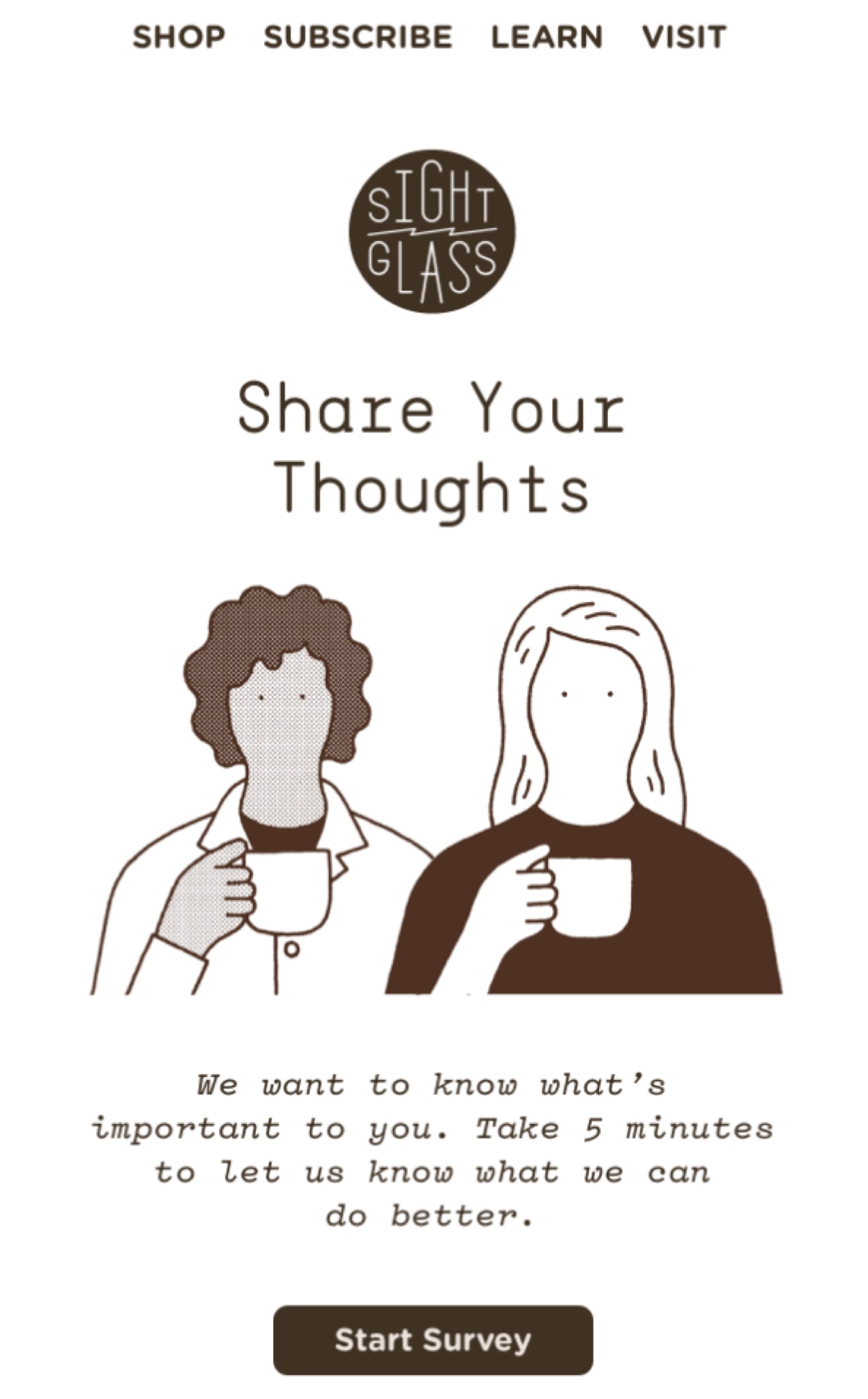
Email example from Really Good Emails
Sales email campaigns
Sales and promotional emails are self-explanatory — you’re offering your subscribers the chance to buy something. Here are a few ways to do that:
New product launches
Anytime you have a new product, create an email marketing campaign around it.
Tell the story behind the product. Why this? Why now? What does it do that wasn’t being done before? What problem is it solving? What need is it addressing? Who is it for?
The more captivating, intriguing, useful, essential, and desirable you can make this product, the more sales you will make.
The best product launch email campaigns will begin before the product is available so you can build up the anticipation. Then, after it’s available, you can promote it for the next several weeks. We’ll share an example of how to plan this type of campaign a bit later.
Discounts, deals, and coupons
One way to keep new and loyal customers happily subscribed to your email list is to reward them now and then. Discounts, deals, and coupons aren’t just to make sales, but to say thank you and deepen loyalty.
While you don’t want to offer discounts all the time because it will make people expect them and never buy products at the regular price, email discounts from trusted companies give a good reason to remain engaged via email, and you’ll make more sales than you otherwise would.
Benefits and rewards
If you have a rewards program or a membership, you can create emails that pitchl the benefits of those programs and get more people to sign up.
You can also send out another type of automated email reminding people how many points they have, if you’re using that kind of approach.
Another benefits-focused email will promote specific products. It might discuss problems solved by a particular product, or why other people love this product so much. Any email talking up a product’s value, worth, or usefulness and then offering the chance to buy it counts as a sales email.
Referral emails
If you have a referral program, email is one of the best ways to sustain and grow it. You can regularly send out emails encouraging your most loyal customers to refer friends, family, coworkers and other people they know to your store.
Your referral program could involve an entirely different set of emails for customers making their first purchase. Here, you’re introducing the referral program and using it to hopefully produce more repeat customers who also attract new ones.
Transactional email examples
This last type of ecommerce email marketing exists to deliver customer service in situations when the buyer has taken some sort of action that requires or justifies a response.
Transactional emails deliver information the customer needs or wants to know as a result of something they did. Here are a few common examples of transactional emails:
Purchase receipt emails
After a customer purchases something from your ecommerce site, they should get an email receipt. This confirms their purchase and provides the financial records they need to keep track of their expenses.
This is distinct from a thank you email. Do not merge these into one. Records are for record-keeping. Record-keeping is boring. It’s an essential task of life, but no one gets excited about receiving a receipt.
But thank you emails are about gratitude, feeling appreciated, and the joy of what you just bought.
Password reminder emails
If your online store has a login option, people will forget their passwords. When they request a new one, they will receive an email that confirms the new password or reminds them of the old one.
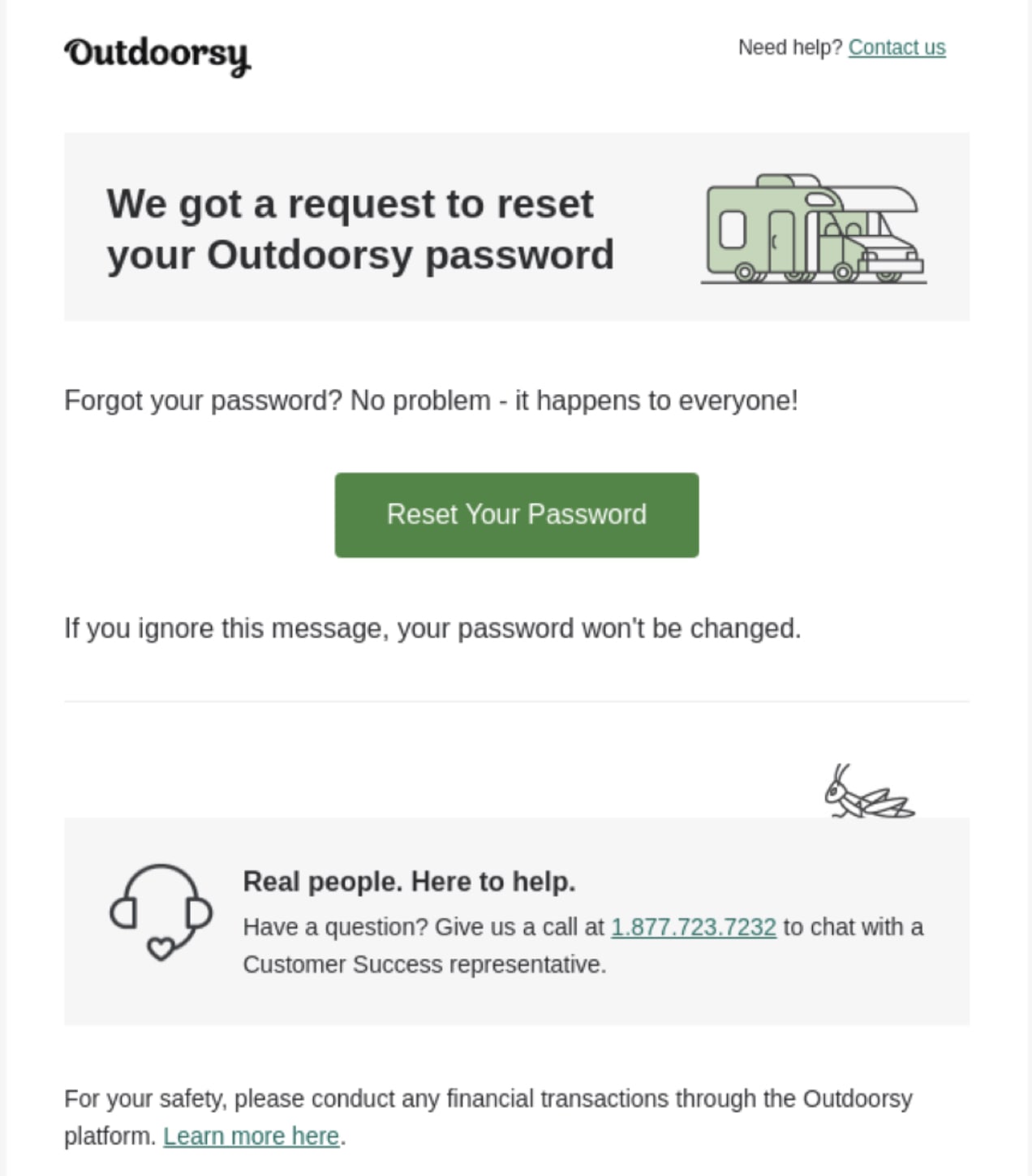
Email example from Really Good Emails
Login verification emails
Similarly, after someone logs in, you may want to set up a verification email that confirms the correct person is logging into the account.
If you have a membership program that has perks and rewards, houses sensitive information about your customers, or allows the user to update orders or shipping addresses, you may still want transactional emails like this as part of your service.
Shipping update emails
For ecommerce stores, this is one of the most important of all the transactional emails you can send. Since most, if not all, of your sales happen online, nearly all your customers will be waiting for their orders to be delivered. Sending them shipping updates will not only make them excited about receiving the package, it will decrease the number of customer service queries you get.
Account management emails
If your ecommerce store lets customers have accounts, they can go in and make changes to their profiles and other information. You might send confirmation emails to verify these changes.
You could also use this type of transactional email to request changes to their account, like an updated password for security purposes, or an accurate shipping address.
Tips for creating effective email marketing campaigns
↑ Back to topA winning ecommerce email marketing strategy requires doing several things well. You have to plan the campaign, write the content, design the email, decide who will receive it and when it will be sent, and make sure the links take the subscriber to the right place.
Here are some tips to make your email marketing campaigns the best they can be:
Email campaign planning tips
When planning an email campaign, your first question may be, “Can I do this with just one email or will it require a series?”
If a series, your content will come out better if you write the whole thing at once, to whatever extent that’s possible. If you try to write one email one day, two more three days later, and two more a week after that, you’ll create way more work for yourself, and it will be harder to capture the same flow of creativity each time.
If your campaign will require multiple emails, plan out the topic, purpose, or goal for each one before writing.
Let’s say you have a new product and want to create personalized email campaigns to send to people on your list who have bought other products that relate to the new one. Here’s how your campaign might look:
- Email 1: Discuss common frustrations that relate to the new product
- Email 2: Share a customer story about that frustration, hinting at possible solutions
- Email 3: Make an announcement of the new product that addresses the frustration
- Email 4: Disclose more details about the new product with a release date
- Email 5: Announce the product release when you’re one week away
- Email 6: Send another countdown email — “Release date now X days away!”
- Email 7: Tease an incentive — “Buy this product on the day of release, and get a free gift to go with it!”
- Email 8: Inspire urgency the day before launch by mentioning limited inventory
- Email 9: Send a more direct CTA on release day
- Email 10: Share a final reminder two days after the sale
- Email 11: Send an automated email only to buyers asking for reviews and testimonials
- Email 12: Promote a customer testimonial about the new product
- Email 13: Send a bundled pricing offer with another popular product
- Email 14: Share another customer testimonial
- Email 15: Distribute a survey email sent only to buyers of the new product
That’s an email plan. You can write one out in just a few minutes, and you can always adjust it later. As you can see, the point is to make each email about one thing, and create a sequence that makes sense for whatever your objectives are.
Also, sending out these 15 emails might take two months. You’re not sending them every single day.
And that’s the next part of your plan — when will you send your emails? You can always adjust this later, but mark out the approximate number of days between each email. If there’s a fixed date involved in the campaign, such as the product release date in this example, you might say “send ten days before date”, or “send one week after date” in your plan.
Once your plan is in place, you can commence with the writing.
Content tips
To make your content motivate a response, use these email marketing tips when writing the copy.
Repetition
Few people will read every word of your email. And in a longer campaign, virtually no one will see every email. That’s why repeating yourself is not just okay, but smart.
Don’t say to yourself, “Well we already said this back in the third email, so we don’t want to say it again here in the sixth one.” Few readers will see both those emails. If there’s a critical message to deliver in a campaign, say it repeatedly.
The most important ecommerce marketing message is your offer. In a longer campaign, this should show up over and over and over.
Personalize
Use the person’s name. If geography is relevant, mention this is for people from their particular region, city, or other location. If things like purchase history or interests are relevant, speak to that.
Personalization increases engagement and response, because readers see it as relevant to them.
A clear call to action
The more specific and clear, the better. Vague CTAs like “buy now” and “learn more” may be required on certain social media platforms, but in an email, you can do better.
Using the previous example, since you are featuring a new product, put that in the CTA. Your CTA button could say “See the product name”. Or if its category is more relevant, “see the new category name”. You could also use language like:
- Reserve yours
- See pricing
- See features and benefits
Or, you could base your CTA on what you’ve been focusing on in the email. If focusing on a frustration, the CTA could be “See why this helps”, or “Here’s the answer”.
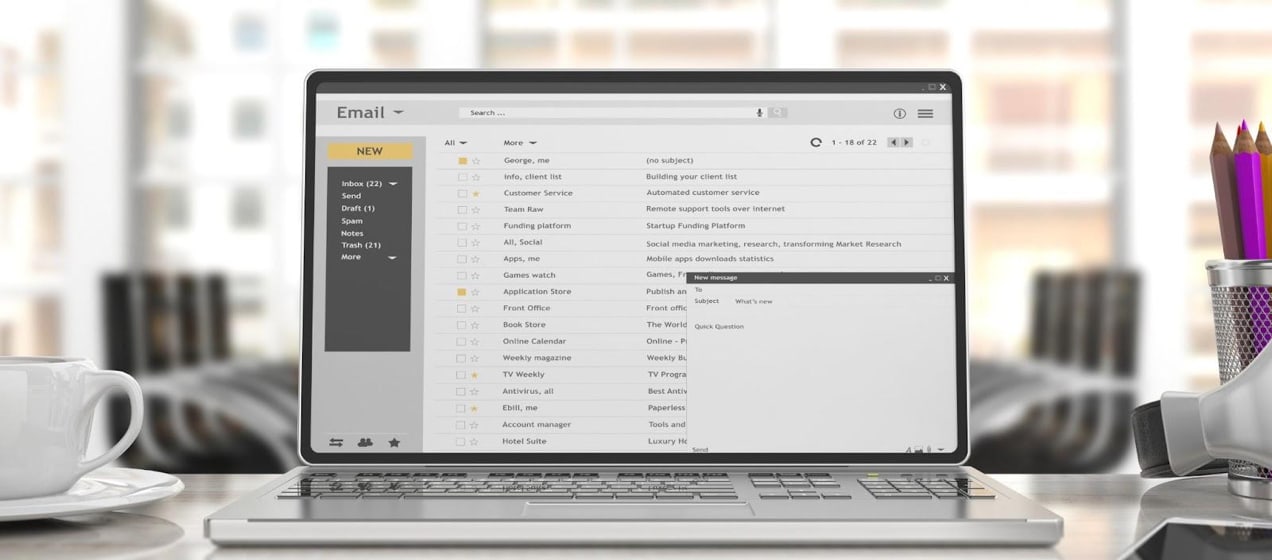
Effective subject lines
The goal of subject lines is to get the email opened. But remember, as mentioned earlier, even people who don’t open the email will still see the subject, so consider the message you’re sending to them if the subject line is all they read. This is still engagement.
That said — you want them to open the email.
Another advantage of ecommerce email marketing campaigns that use multiple emails is that you can use a variety of subject line types. Here are some examples for each type:
- Curiosity: Has this ever happened to you?
- Direct: Brand new product now available
- Urgency: Only 10 back in stock ⚠️ — get yours now
- Emotional: Sick and tired of this happening to you?
- Communal: Why [Name] loves our new product
- Request: Can we ask a favor?
- Humor: The cat won’t want to leave *this* bag 😹
Use the same one of these strategies with every email you send, and your subscribers will wise up to your act and stop paying attention. You have to vary your strategy. Mix it up with different approaches, and it will feel to the reader like this is new. In marketing, new is good.
A strong opening
Many people say the subject is the most important part of the email. Others argue that the opening sentence or paragraph matters more. Sure, they have to open the email. But it is rare for a subject and pre-header alone to actually motivate a purchase, or whatever other action you want them to take.
The opening of the email determines if they will keep looking at the rest of it, or stop, delete, and move on.
Give them good reason to keep reading.
Make it relevant by making it clear who this email is for and that they are in the right place. Any personalization you’re employing should show up right at the start. If you’re fixating on a major frustration or common problem, talk about that at the beginning.
A note about email length
Some people worry too much about email length. The real issue is email purpose. Each email should have just one purpose. That’s why the earlier list featuring types of ecommerce promotional emails is so long.
You can’t send one email that solves a problem, shares a customer success story, offers a deal, and asks for a survey response. Well, you could do that, but your readers will be overwhelmed, and your average click through rate will be lower.
An email with one purpose might end up with a fairly high word count but still be more effective than a shorter message with four unrelated calls to action.
Are you selling something? Then sell it. Are you addressing a common frustration? Then talk only about that. This simplifies the amount of mental energy your readers have to devote to your email.
Each email will be as long as it needs to be. Don’t stress the length, because people don’t need to read the entire email to take action on your offer.
Design tips
Most email marketing service providers offer numerous email templates for different types of emails. You can also create your own email templates, or direct an employee or hire a contractor to make a few.
Unless you’re a designer, you probably want to use a template or hire an expert to help you get the most out of your email campaigns.
But don’t let fuss over background colors or font weights get in the way of the content and the readability. Effective communication is what email design is about, and here are the primary things to get right:
Appropriate use of graphics
Does every email need a photo or graphic? No. Graphics should be relevant to the content and the purpose. If you can’t come up with one, that’s fine. Don’t stress about it.
But visuals that aid your message will generally make your ecommerce email marketing more effective. These might be photos, gif animations, charts, or other designed graphics.
Don’t make them too large. Emails with extra large files take too long to open. Image quality in email marketing isn’t as important as on your product pages where consumers may want to zoom into view the finest of details. Usually, it’s okay to reduce the quality a bit to shrink the size.
Alt text
Alt text allows subscribers who use screen readers due to visual impairment to still be able to fully engage with your entire email.
Some email subscribers will have images disabled, so they won’t see any of your graphics, either. That’s another reason not to rely too much on graphics:. Don’t ever include vital information in an email that only shows up in the graphic. Anything the reader must see — like the offer or CTA — needs to be in the email text as well.
But you can also put text “behind” your images. It’s called alt text. Readers who can’t see your images, should be able to access the alt text. Here, you should summarize what the image is about and convey its purpose in your messaging.
Visual hierarchy
Intersperse text with imagery. Give multiple means of engaging with your emails.
Most importantly, make it easy to skim or speed read your email. How do you do that?
Short paragraphs. Headings. Varying font weights (bold, etc.).
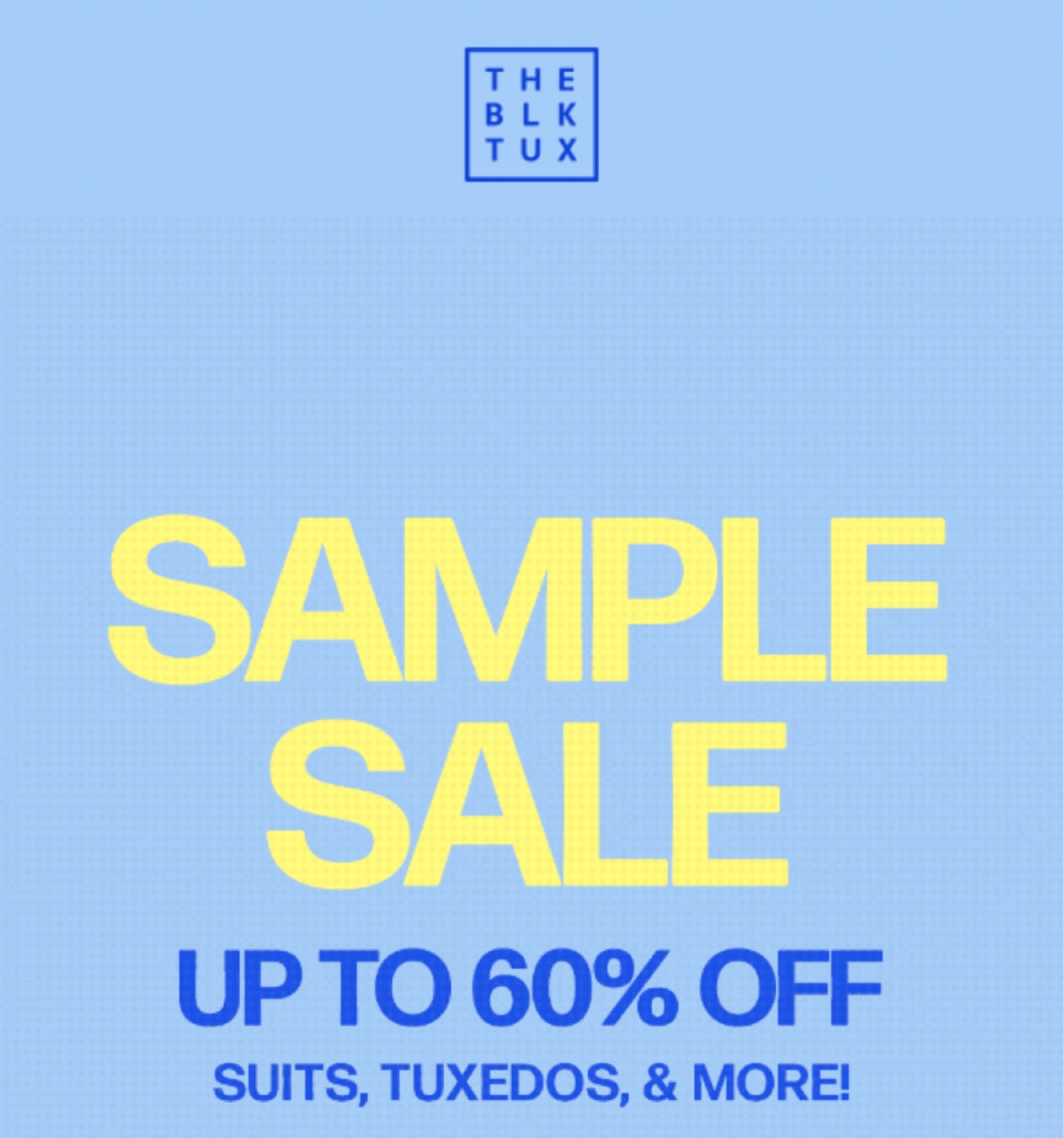
Email example from Really Good Emails
Can every paragraph be one line? Isn’t that bad writing? Your language arts teacher might frown at it, but for email, it’s perfectly fine.
This is another reason why email length doesn’t matter that much.
A 500-word email with a bunch of short paragraphs is much easier to read than a 200-word email that’s all one paragraph. How you present your content matters way more than how much of it there is.
Hard to believe? Here’s the text from this section of what you just read, repeated, as a single paragraph:
Intersperse text with imagery. Give multiple means of engaging with your emails. Most importantly, make it easy to skim or speed read your email. How do you do that? Short paragraphs. Headings. Varying font weights (bold, etc.). Can every paragraph be one line? Isn’t that bad writing? Your language arts teacher might frown at it, but for email, it’s perfectly fine. This is another reason why email length doesn’t matter that much. A 500-word email with a bunch of short paragraphs is much easier to read than a 200-word email that’s all one paragraph. How you present your content matters way more than how much of it there is.
That’s only 109 words, and look how much harder it is to get through it!
Typography
Use Sans Serif fonts. That means fonts other than Times New Roman and ones like it that have little hooks and edges on all the letters. Online, it’s easier to read Sans Serif fonts than serif fonts. Common ones are Arial, Helvetica, Verdana, and Calibri.
And a 14-point font or larger is preferable for email, again because it’s easier to read, especially on mobile devices, with screens already so tiny.
CTA buttons
As mentioned earlier, any important links need to have text, because graphics aren’t guaranteed to be seen.
But buttons are better, so you should use both for your primary call to action. Make your buttons a color that’s different from the other ones on the screen.
Also, you want to have an appropriate number of CTAs. Too many, and people start to feel berated. Too few, and they might miss it. How many you use depends on the length of the email.
A browser and device check
Will your emails show up well on every device, in every browser, and on every email client such as Outlook, Yahoo, and Gmail?
Well….
That’s a hard one to answer, and probably not something you thought about. But it’s important. There are some paid services that help make sure your emails look right but you might use test emails sent to yourself and coworkers to test the most widely-used devices and platforms for free.
Targeting tips
For some situations like big announcements or possibly newsletters, it may be appropriate to email your entire list. But for the most effective email marketing, you want to start using list segmentation and tags to narrow down your target audience.
By segmenting your list, you can break down your subscribers into groups that enable you to send more personalized and relevant marketing. This will strengthen your customer relationships.
As an ecommerce company, you probably have product categories. Most customers probably gravitate toward some of these and less toward others, for various reasons. That’s your starting point for segmentation.
Then, you can create email marketing campaigns that speak more directly to people who are interested in particular types of products. You can offer sales like 20% off all this product category. You can run holiday specials unique to each category, depending on the holiday.
You can speak more specifically to the problems and needs addressed by your products when you can focus the discussion around a particular category.
You can also segment based on:
- Geography
- Distance from your company
- Gender
- Age
- Education level
- Interests relevant to your brand or products
- Prior behaviors
- Event attendance
- Email responsiveness
For example, you could create a segment consisting only of subscribers who have opened at least 50% of the emails they’ve received from you. This is a highly-engaged segment. You could create a segment consisting of everyone who opened at least one email in a particular campaign. Or everyone who used a particular coupon. Or everyone who bought something last December.
All these kinds of segments allow you to create more effective and targeted offers and email copy.
Timing and frequency tips
How many emails is too many? Well, you can keep sending emails until your subscribers buy or unsubscribe. But you don’t want them to unsubscribe out of annoyance or overwhelm. That said, there are companies that send emails every day, sometimes more than once a day. And for some email lists with loyal subscribers, they don’t mind.
For most ecommerce companies, that would be a bit much.
Your email timing and frequency depend, in part, on your industry and what your list seems to respond best to. If you send three emails per week, and find a lot of people unsubscribing, maybe pull back to one or two per week. Or make it more sporadic, like once a month, but punctuate it with campaigns now and then that bunch them up a bit more for certain periods of time.
Watch your metrics, and use that as a guide. In general, gradual change is best. If you’re sending one email per month right now, don’t suddenly increase it to five per week.
Email is partly just about staying on their minds. Being remembered. Being in their lives. Send enough emails so they don’t forget about you.
Ecommerce email marketing best practices
↑ Back to topThere are some general email marketing best practices you need to use, and we’ll get to those next. But there are also some best practices unique to ecommerce businesses. These are things you need to infuse into your ecommerce email marketing if you want to get the best results:
Focus on underlying emotions
Every product solves a problem or meets a need. No one just buys food because the human body needs nutritional sustenance. No one just picks the first item of clothing they see in a store. We have choices. And we have preferences. This is true for virtually every category of product across all industries.
To deepen your customer relationships so more subscribers stick around longer because they want your products, you must continuously communicate about the problems, needs, fears, desires, and worries that your products address.
If your products make life easier, how so? List out 50 ways this is true, and you have 50 different email ideas.
Do your products instill a sense of status or uniqueness in the people who own them? Nurture that feeling.
Benefits are more powerful than features, but outcomes are more powerful than benefits. What is the desired outcome that results when someone buys a particular product? Talk about that.
Use product photos
Because you sell products, you should have product photos. And these should show up regularly in your emails. This should go without saying, but make sure you don’t neglect it. And if your photos are less than the level of quality they should be, pay a photographer to take better ones, or learn how to take professional product photos yourself.

Have accurate information
Product inventory needs to be current. If you send promotional emails about a product but you’re out of stock, that will be a problem. You can use email to let customers know the status of a product, when it’s back in stock, and how much you have left.
Feature success stories
Community is powerful. Feeling part of an exclusive or elite group makes people feel special. This is one reason to share customer success stories. It’s not just about earning trust. It’s about bonding with other like minded people. That’s why video testimonials are so powerful.
They make other people feel a shared sense of commonality. You make them think, “I’m like them.” You need to be continually asking for and sharing customer success stories. And if you recall from earlier, you can automate the asking part so it doesn’t take up any of your time.
Demonstrate customer service
Email is the place to show that you deliver high quality service. Especially with product-based businesses, quality matters. If something goes wrong, you need to address it. And with email marketing, you can turn what might seem like a negative into a positive.
Suppose you get a bunch of customer complaints about a particular product. Maybe even some bad reviews because of it.
Create an email built around the message of “You spoke, and we listened.”
Announce changes to the offending product or service, how you’re improving it, and what you’re doing for customers who felt short-changed. Then, everyone can see that you’re delivering great service, and more importantly, that you care. This is a smart email marketing strategy that will work to retain customers.
General email marketing best practices
↑ Back to topA successful ecommerce email marketing strategy depends on the practices just listed. But there are also other email best practices that every business needs to follow to have the greatest success. Here are the main ones:
Get permission to send
Anti-spam regulations like CAN-SPAM and GDPR are making it tougher than it used to be to get away with sending unwanted emails. And as of February 1, 2024, Gmail and Yahoo! have updated their sender requirements to further protect recipients from spam.
That means, get permission to send emails to everyone on your list. This is another reason to use an email service provider — the opt-in forms you use to collect email addresses include a box to check where subscribers give their permission. You can also add a box on your checkout page so you get permission from new customers.
This also means you should not buy email lists. Those will be filled with invalid addresses anyway, but even the real ones can report you for sending unwanted email, and you don’t want that hassle.
Maintain email list hygiene
Email deliverability has become one of the most talked-about issues facing email marketers. If you send to invalid email addresses and repeatedly get hard bounces, or get too many spam complaints, your email reputation will suffer. If you keep doing this and don’t make any changes, you can actually wind up with most of your emails going directly to spam folders or not being delivered at all.
This is the purpose behind email list hygiene. Yes, you must clean your email list.
But here, the dirt and grime isn’t the perpetrator. With email lists, the filth you have to remove refers to invalid or expired email addresses.
These can occur for a variety of reasons — people misspell their own emails when they sign up, they lose access to email accounts like from companies that no longer employ them, and they just stop using certain personal email addresses.
Whatever the reason, if you keep sending emails to invalid, non-working, or abandoned email accounts, you can get penalized. So monitor your bounces, and delete the invalid addresses. In doing this, you’ll keep your bounce rate down, and your email reputation up.
You may also want to remove inactive email addresses. If someone hasn’t opened an email in three years, they probably never will. You’ll increase your open rate and improve your email reputation by cutting those people off your list.
Authenticate your email domain
This is a fairly technical process, and we won’t go into great detail on it here. But by authenticating your email domain, you are telling mailbox providers like Yahoo and Google that your email is legitimate. And you’re also preventing spammers from pretending to be you, a process known as spoofing.
You authenticate your email by setting up authentication protocols known as SPF, DKIM, and DMARC. Here’s more on how those work and how to set them up.
Secure your forms and website
With some email marketing service providers such as MailPoet, you can set up your forms so bots cannot subscribe to your email list.
If you don’t have some sort of prevention here, you may try to send to fake email addresses which will hurt your open rates and ultimately your deliverability.
You can secure things by only using forms provided by reputable email service providers.
You can also make your forms more secure by using CAPTCHA.
Or, better yet, use Akismet, which automatically protects the forms on your site from dangerous and annoying spam without requiring a CAPTCHA. This means that the user experience isn’t disrupted, but your forms are still protected.
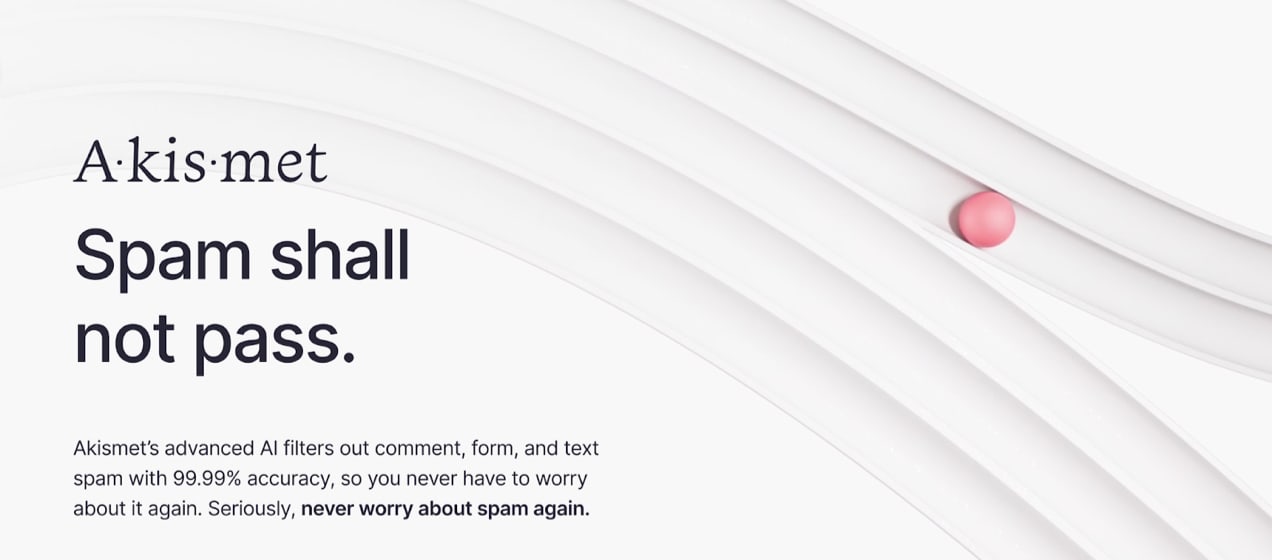
Ensure valid email addresses
Make sure your reply-to and sending email addresses are valid and correct if they are different from each other or from your primary business email. For example, you may have an office@yourdomain email address, as well as a service and an admin one, in addition to ones with your name or your employees’ names.
Make sure not only that whatever you’re using in your emails is valid, but that someone checks that inbox regularly. This is especially important for transactional emails, which often get set up in different platforms and at different points in a business’s development.
Include an unsubscribe link and physical mailing address
Anti-spam laws require both of these. You must include a physical mailing address in the footer of your emails, and you must include a working unsubscribe link.
Every reputable email service provider will include the unsubscribe link as a standard feature in all their email templates. But you have to fill in the mailing address.
Email marketing tools
↑ Back to topOkay, let’s take a breather. You’re doing well to make it this far. You’ve read a lot about email marketing for ecommerce. You’ve learned about list segmentation, opt-in forms, anti-spam laws, as well as types of emails, how to write and design them, and metrics like open rates and click through rates. Perhaps you’ve even started working on a list of email marketing ideas.
Email marketing software and marketing automation platforms enable you to implement and monitor all this. You’ll keep track of subscriber activity. You’ll know when you have new subscribers, when someone unsubscribes or marks you as spam, and who is opening and clicking. You can break your list into segments based on all the factors we’ve discussed.
There are two email marketing service providers in particular that deliver everything you need as an ecommerce business, and they also integrate seamlessly with WooCommerce, because they are Woo products.
If you’re looking for a powerful tool to simplify email marketing while boosting results, Klaviyo should be your first stop. It syncs with WooCommerce and has AI-driven personalization tools so every send is more effective than ever before. From recovering abandoned carts to recommending upsells and securing five-star reviews, Klaviyo’s extensive automation capabilities take the heavy lifting out of customer engagement, helping you drive more sales and build lasting relationships.

AutomateWoo offers a much more robust array of email automation capabilities, including many of the ones you read about earlier such as wishlist marketing, personalized coupons, membership and card expiration notifications, review request emails, and more. Created just for Woo, it’s an ideal ecommerce email marketing platform.
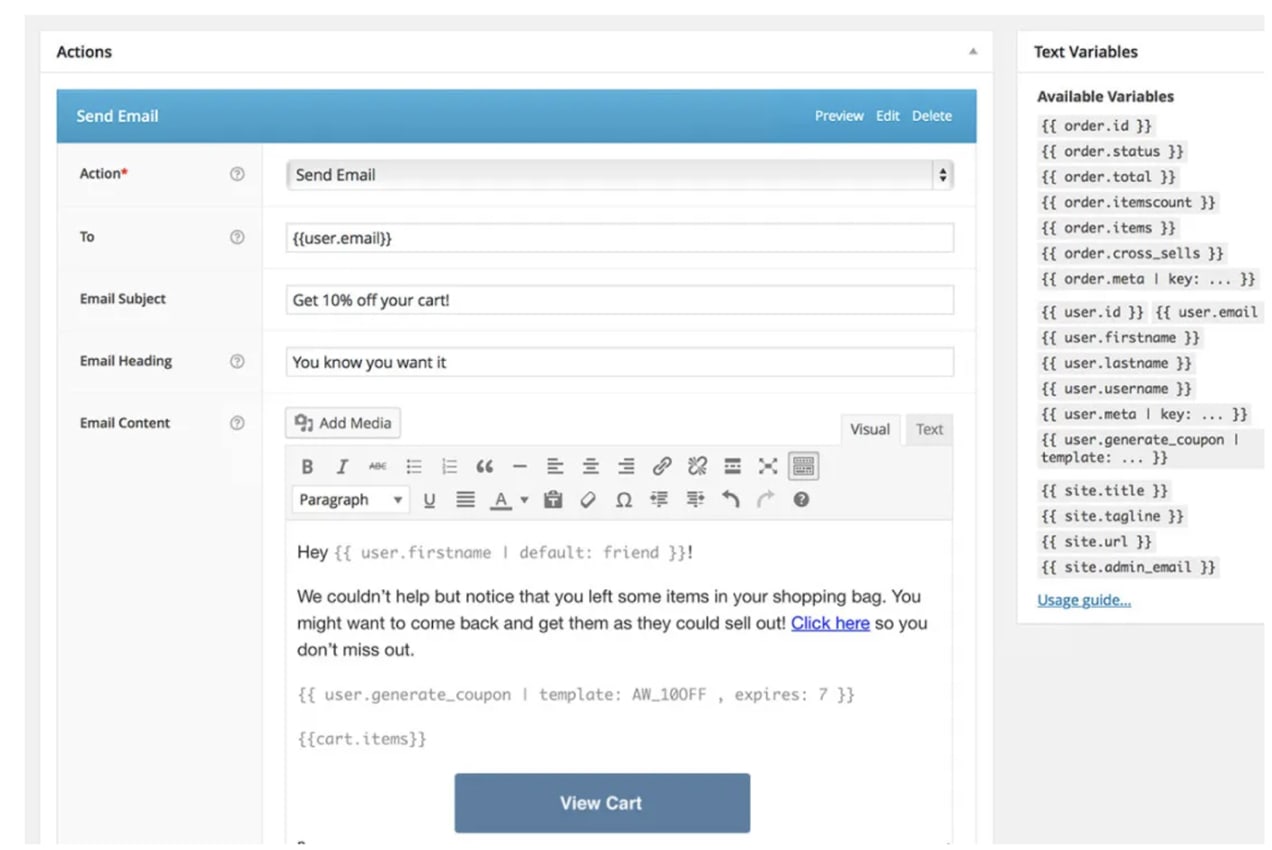
Both are great choices, and you can decide which one is the best email marketing tool for your current business situation.
How to get more email subscribers
↑ Back to topAll these ecommerce email marketing strategies sound great, but if you don’t have any subscribers to use them on, it doesn’t do much good.
To implement an email marketing strategy, you have to have an email list. That means acquiring new subscribers. And over time, you need to gain more than you lose.
Here are a few strategies for growing your email list:
- Add email signup forms to your website home page, footer, blog, and other key pages
- Motivate signups with coupons, discounts, gifts, or other incentives
- Include email membership as part of a product bundle
- Collect email addresses at live events like industry trade shows
- Create and promote lead generation assets
- Advertise your lead gen assets on social media and using PPC ads
- Send a postcard as part of your shipping package that motivates email signups
- Include a checkbox to sign up right on your checkout page
- Highlight a signup option as part of your thank you post-purchase page
There are quite a few other ways to grow your email list, but that gives you a good starting list, and is more than enough for any ecommerce business if you use them consistently.
The even more important thing is to send emails to your growing list. If you forget to do this, your new subscribers will forget they joined your list. If you decide to start sending emails six months later, many of them will unsubscribe or even mark you as spam.
So for starters, have at least one automated welcome email. In addition to that, be sure and send regularly, at least once a month, but more than that is better because you need your subscribers to remember you and enjoy hearing from you.
Integrate your ecommerce email marketing strategies with other marketing
↑ Back to topLastly, we come back to where we started. Email is just one of many marketing channels. You cannot succeed in all your marketing efforts only with email. It works best as a customer relationship tool. You deepen customer loyalty, create recurring income, and grow long term revenue.
But email doesn’t work as well for finding new customers. And it requires people to open their inboxes, which not everyone does all the time.
What else do people do? They text. They go on social media. They search online. They receive physical mail. They watch TV and stream movies.
You can advertise in all these places too, and your email marketing will support your efforts in those places.
For example, texting offers another way to follow up with customers in addition to email. You don’t have as many characters to work with, but you can send short quick messages that will be seen by almost everyone who receives them.
A smart combination of email and SMS delivers better results than email alone. If you supplemented the 15-email example campaign from earlier with SMS, you could send alerts and updates about when the new product was released, how many sold in the first hour, and more.
If people hear from you ten times from ten different sources, they may not mind at all. If they hear from you ten times in a short time frame from the same channel, they start to feel pressured, annoyed, or harassed.
Omnichannel marketing works because you’re showing up in multiple contexts — as part of their lives.
Email doesn’t work as well for lead generation or acquiring website traffic as other channels like SEO, PPC ads, and social media. But email helps you convert those leads into new subscribers and customers. Email is great for follow-up. It gives the subscriber the option to engage with you from a place they can control — their inbox.
Other channels have their advantages and disadvantages, too. Learn how to use multiple channels, each for their strengths, and use email to convert, deepen, and follow up.
Get started with your ecommerce email marketing using Klaviyo, MailPoet, or AutomateWoo.
About


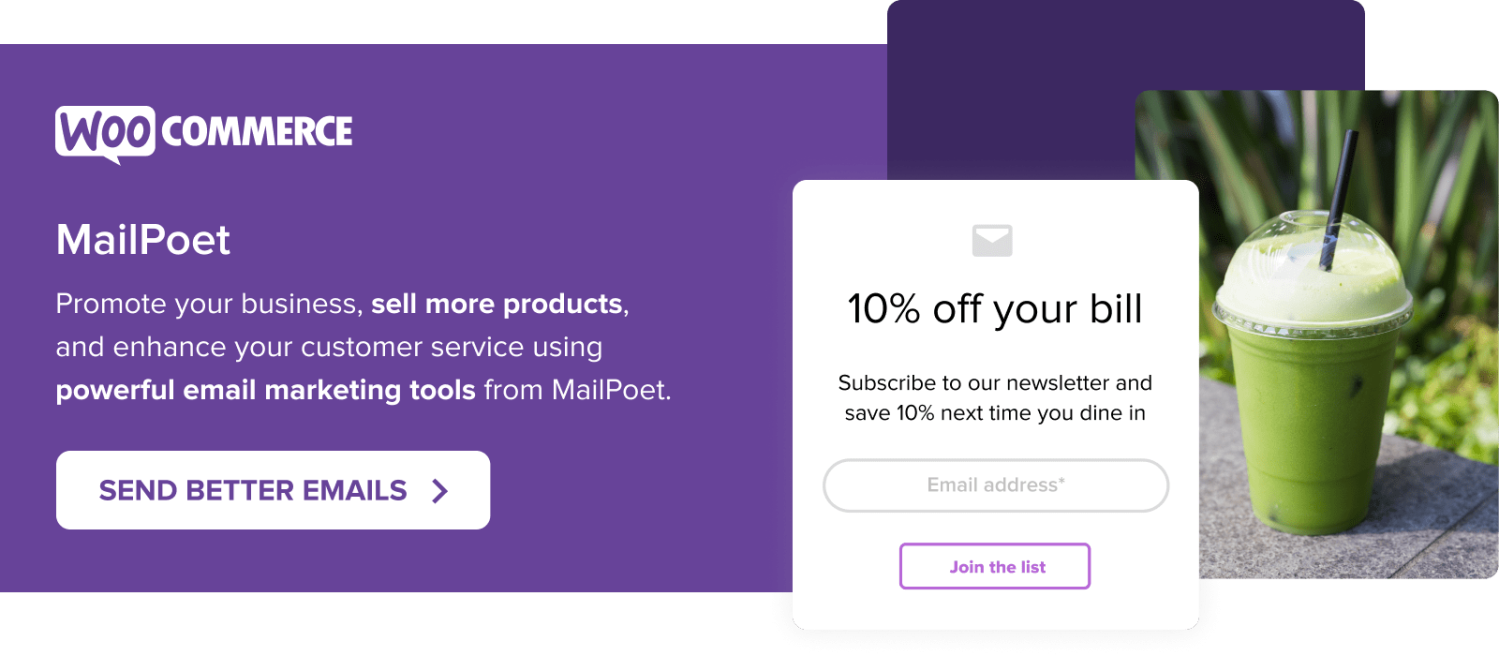



A note to the created of this post:
Surely there’s valuable information here about email marketing but I would grow old trying to read all of this. Is there an instructional video on the subject? I would like to use the feature on my website but I’m a simple man, not a tech guy so though this information is elementary to the creator, it can be overwhelming and discouraging to users who aren’t familiar with this or are not developers.
Thanks!
Rodney Pike
RodneyPikeArt.com
The creator of the post did everything you are not supposed to do. He/she lost all the readers with the length of that email. A lesson to be learned. But email marketing is a difficult subject.
Same. Too Long. Too much superfluous information, not enough “click here” Do This. “click there” Do That. I need a step by step not the entire history of “What Is Email?”
This is SOOO good. Thank you for the comprehensive and clear treatment!